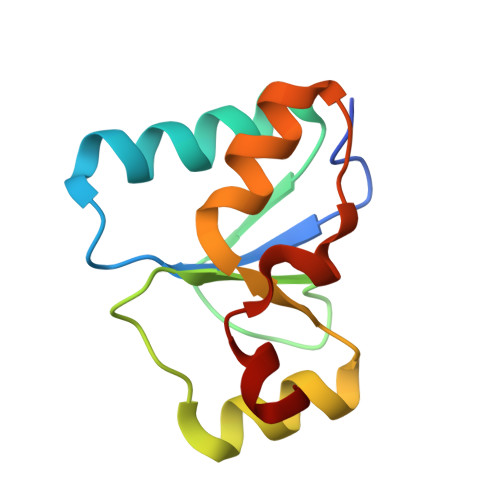Crystal structure and mutagenesis of a nucleic acid-binding BRCT domain in human PARP4.
Frigon, L., Pascal, J.M.(2025) J Biological Chem 301: 110277-110277
- PubMed: 40412520
- DOI: https://doi.org/10.1016/j.jbc.2025.110277
- Primary Citation of Related Structures:
9DEV, 9DFO, 9DFP, 9DFQ, 9DFR - PubMed Abstract:
PARP4 is an ADP-ribosyltransferase typically associated with the cytoplasmic vault organelle. PARP4 has a distinct domain composition relative to other PARP enzymes; however, the N-terminal region of PARP4 is homologous to a collection of domains found in PARP1, a regulator of multiple nuclear processes including the cellular response to DNA damage. The N-terminal region of PARP4 interacts in vitro with nucleic acid, in particular a non-coding RNA associated with vault particles, and a BRCT domain is implicated in this interaction. Here we report the X-ray structure of the BRCT domain of PARP4 and structure-based mutagenesis that interrogates the nucleic acid binding activity using vault RNA. The isolated BRCT domain is capable of mediating interaction with vault RNA, and we identified four BRCT mutants that disrupt vault RNA interaction to varying degrees. X-ray structures of the BRCT mutants indicate that perturbations to an electropositive region of the BRCT surface underlie the loss of nucleic acid binding. Comparison to other nucleic acid-binding BRCT domains highlights distinct features of the PARP4 BRCT structure. The study presents the experimental structure of the PARP4 BRCT domain, establishes this domain as nucleic acid-binding module, and provides PARP4 BRCT mutants that can be used to investigate PARP4 cellular functions.
- Department of Biochemistry and Molecular Medicine, Université de Montréal, Montréal, Qc H3T 1J4, Canada.
Organizational Affiliation:

















